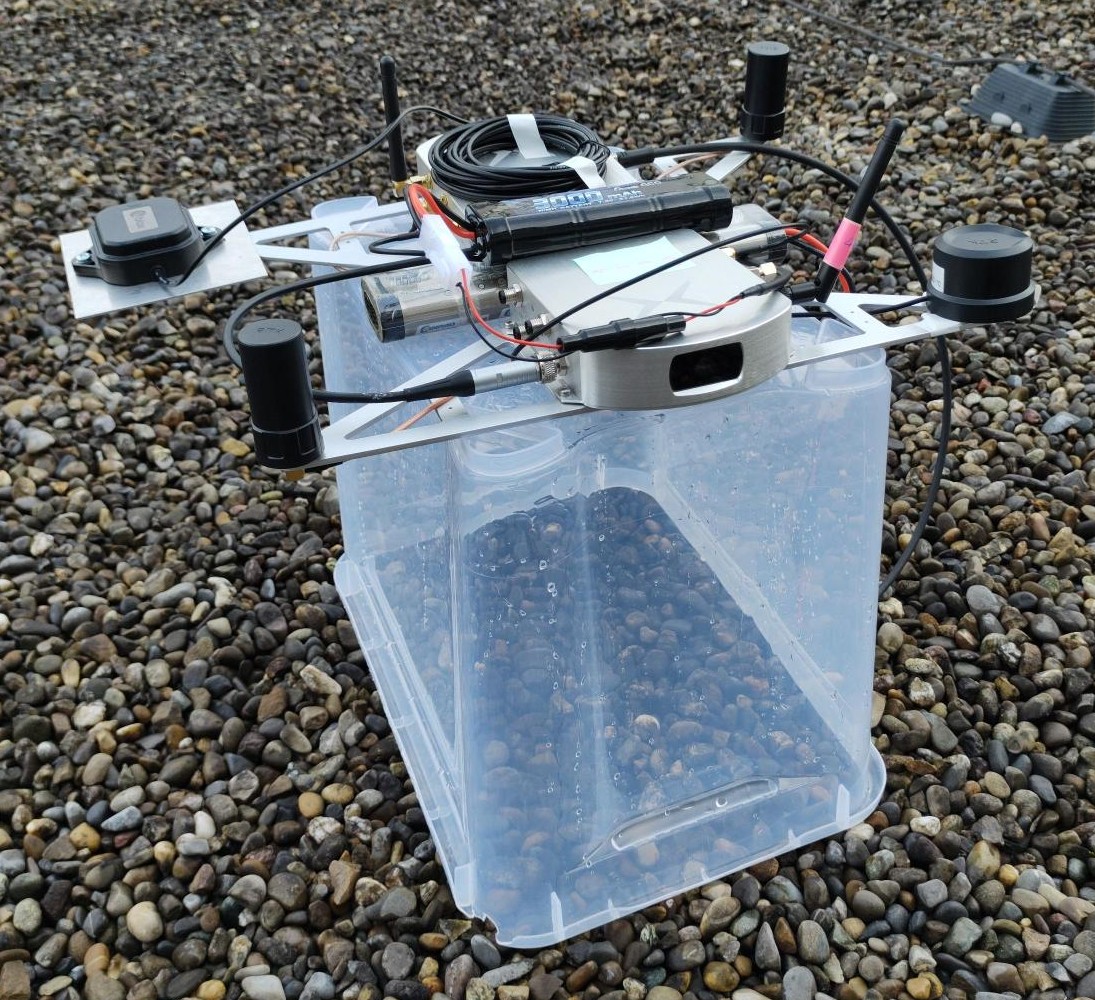GNSS antenna testing
Table of contents
Motivation
This document details a brief analysis on alternative antennas that Fixposition can suggest which have been proven to work properly with the Vision-RTK2. It is worth mentioning that we are not financially compensated for this test in any way. If you want us to test an specific antenna, contact us at support@fixposition.com.
Minimum requirements
The Vision-RTK2's GNSS receivers require signals located at the L1 and L2 bands for adequate operation. Based on our internal testing, we recommend using helical antennas with a gain of around 35 dB. For reference, our evaluation kit ships with two Hi-Target AH-3232 antennas. The frequency response of the GNSS antennas should be approximately located at the [1195 - 1280] MHz and [1560 - 1610] MHz bands. On top of that, for helical antennas, we recommend a noise figure lower than 1.5 dB.
Other antenna types (e.g., patch, short helical) should be evaluated carefully depending on their placement with respect to other electrical components and the shape of the ground plane provided for them. Thus, besides using a suitable and good antenna (and appropriate cabling), the placement of the antenna is important. See below and for example the following u-blox document: ZED-F9P_IntegrationManual_UBX-18010802.pdf
Antenna assemblies that combine multiple antennas (such as, GNSS, Wi-Fi and cellular) in once casing are not recommended at all. While such antennas work fine for autonomous standard (C/A only) GNSS, they are likely to have bad performance for high-precision GNSS that require phase measurements, such as RTK. Also, the GNSS performance may depend on activity of the other antennas (Wi-Fi signal strength, cellular band used, etc.).
For further analysis, besides analyzing the position estimate performance of the sensor, one can look at the "Receiver RF AGC" value located at the advanced "GNSS status" tab in the Web Interface. The expected values should ideally be located between 20 and 80 percent. For additional information, see also the following U-Blox document: https://www.u-blox.com/sites/default/files/products/documents/GNSS-Antennas_AppNote_%28UBX-15030289%29.pdf
Only active antennas (with a built-in LNA) are suitable for the VRTK2 sensor.
Setup

Fig. 1: Test setup
Each VRTK2 contains one Hi-Tech AH-3232 antenna (the one we ship with the started kit) and one test antenna (e.g., AH-4236).
Methodology
During the stationary tests, the first test uses the test antenna on GNSS2.
To verify that the selection of GNSS connector is not affecting the results, the second test is at the same position but switching connectors.
Results
Summary table
Antenna | Type | LNA supply | Bands | Freq [MHz] | LNA Gain [dB] | Noise [dB] | Suitability |
|---|---|---|---|---|---|---|---|
Helix | 3 - 16V, < 35mA | L1 L2 | 1197 - 1278, 1559 - 1609 | 35 + 3 | < 1.5 | 🟩 | |
Helix | 3 - 16V, < 35mA | L1 L2 L5 | 1160 - 1280, 1515 - 1615 | 35 + 3 | < 1.5 | 🟨 | |
Patch | 3 - 5V, ~15mA | L1 L2 | 1197 - 1249, 1559 - 1606 | 28 + 3 | < 3.2 | 🟨 | |
Patch | 2.5 - 12V, ~37mA | L1 L2 L5 | 1150 - 1290, 1500 - 1615 | 40 + 5 | < 3.0 | ?? | |
Helix | 2.2 - 16V, ~15mA 2.2 - 16V, ~21mA | L1 L2 | 1192 - 1255, 1559 - 1606 | 28 + ? 35 + ? | < 2.0 | … | |
Helix | 2.2 - 16V, ~15mA 2.2 - 16V, ~21mA | L1 L2 L5 | 1160 - 1255, 1559 - 1606 | 28 + ? 35 + ? | < 1.6 | … | |
Helix | 3.3 - 12V, < 55mA | L1 L2 | 1205 - 1278, 1559 - 1610 | 33 + ? | < 1.5 | ?? | |
Helix | 3.3 - 12V, < 55mA | L1 L2 | 1217 - 1257, 1559 - 1610 | 33 + ? | < 1.5 | ?? | |
Helix | 3.3 - 5V, < 55mA | L1 L2 L5 | 1166 - 1278, 1559 - 1612 | 33 + 2 | < 2 | … | |
Helix | 3.3 - 12V, < 55mA | L1 L2 | 1217 - 1257, 1559 - 1610 | 33 + ? | < 1.5 | 🟨 | |
Helix | 3.3 - 12V, < 55mA | L1 L2 L5 | 1166 - 1278, 1520 - 1610 | 33 + ? | < 1.5 | 🟩 | |
Patch | 3.3 - 5.5V, < 45mA | L1 L2 | … | 40 + 2 | < 1.5 | ?? | |
Tallysman VSP6337L | Patch | ||||||
… | … | … | … | … | … | … | … |
Conclusions
Generally, keep recommending Hi-Target AH-3232. We know it works well.
Harxon HX-CHX600A seems to work as good as the reference. Good alternative but does not seem to be worth the price.
u-blox ANN-MB is the best option for a low-profile antenna, but requires proper mounting.
